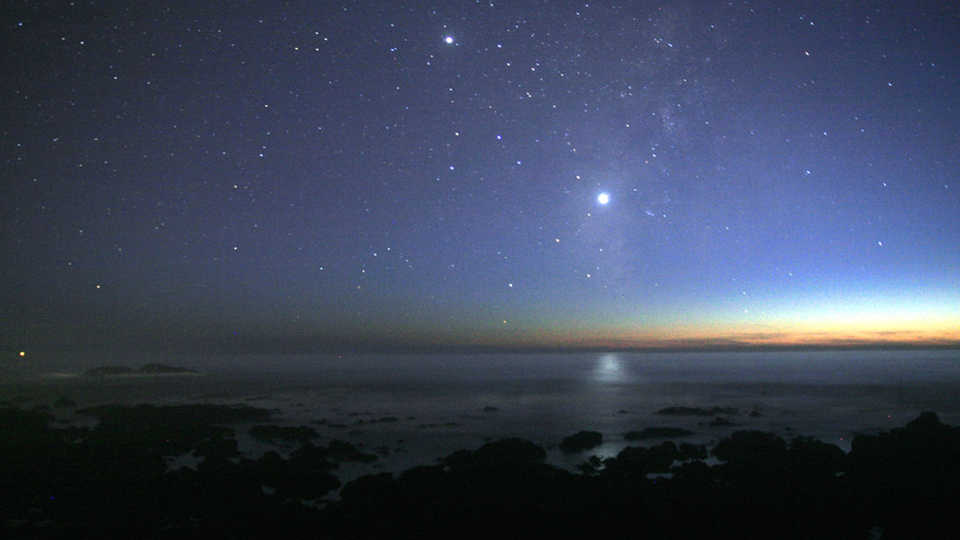Created by Morrison Planetarium staff, these go-to resources cover important events occurring in our Universe.
Universe Update
Can You See Venus in the Daytime?

Have you noticed Venus in the evening sky lately? Because of its unusual brightness, Venus is often referred to (depending on when it’s seen) as either the “Evening Star” or the “Morning Star.” And for good reason! (Even though it’s not really a star.) It reflects 69 percent of the light hitting it, making it the brightest of the planets we see in the sky from Earth and the third-brightest natural object after the Sun and Moon.
Owing to a combination of its phase and its distance from Earth—which varies from 38 million to 261 million kilometers (24 million to 162 million miles) Venus attains its greatest brilliancy in the sky when it’s a fat crescent 35 days before or after its inferior conjunction (the date when it passes between Earth and the Sun). With this year’s inferior conjunction occurring on March 25, that means Venus is at its brightest on February 17, when it will appear in the west after sunset, and then again on April 29, when it shows up in the eastern, predawn sky.
At its brightest, Venus shines about 25 times brighter than the brightest star in the night sky, which is Sirius in Canis Major, the Big Dog. This means that Venus is bright enough for experienced observers to spot it in the daytime sky, if they know exactly where to look. For novices, that can be tricky, since finding it may involve using the Sun as a positional reference, and it's never a good idea to look directly at the Sun without proper eye protection. As an alternative, wait until sunset and see how soon afterward you can spot Venus. On February 17th, it lies 40 degrees east of the Sun, or nearly halfway up from the horizon to the zenith in the west-southwest just after sunset. With luck, it will be easy to see in binoculars—and once they find it, many observers are surprised to realize how much Venus stands out in the sky.
No surprise that this brilliant planet has often been the cause of numerous misidentifications and UFO reports! So if you’ve noticed that bright light in the western sky recently, don’t worry—it’s definitely an Identified Flying Object! Our nearest neighbor, Venus.
Image: Brocken Inaglory/Wikipedia